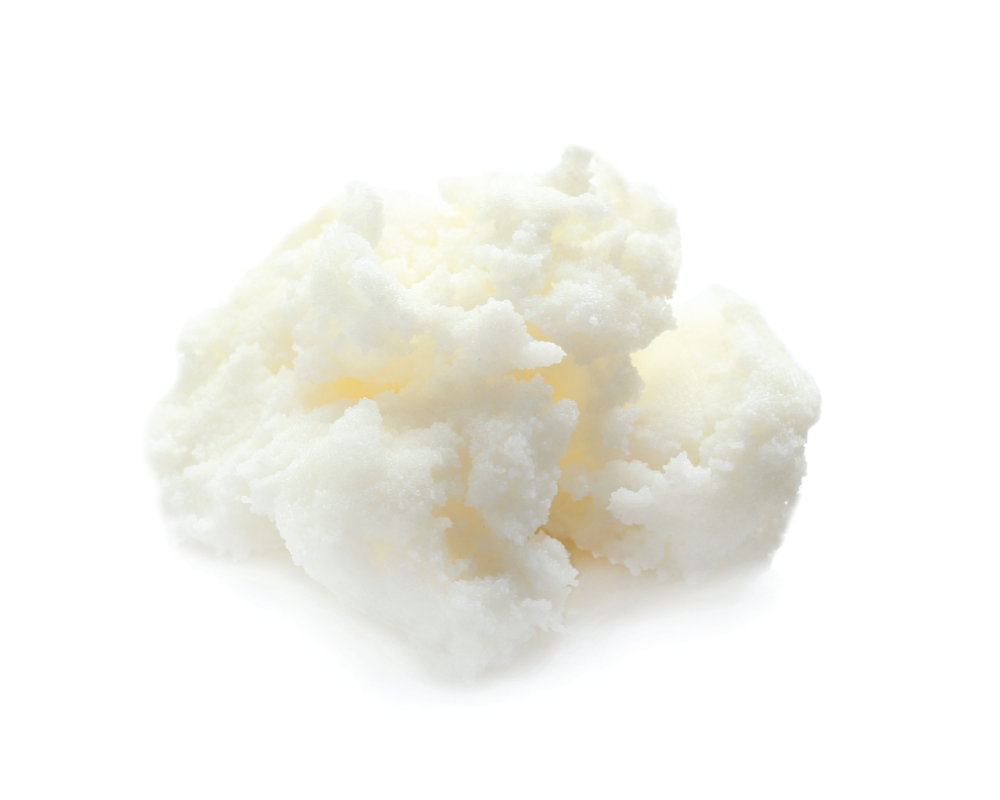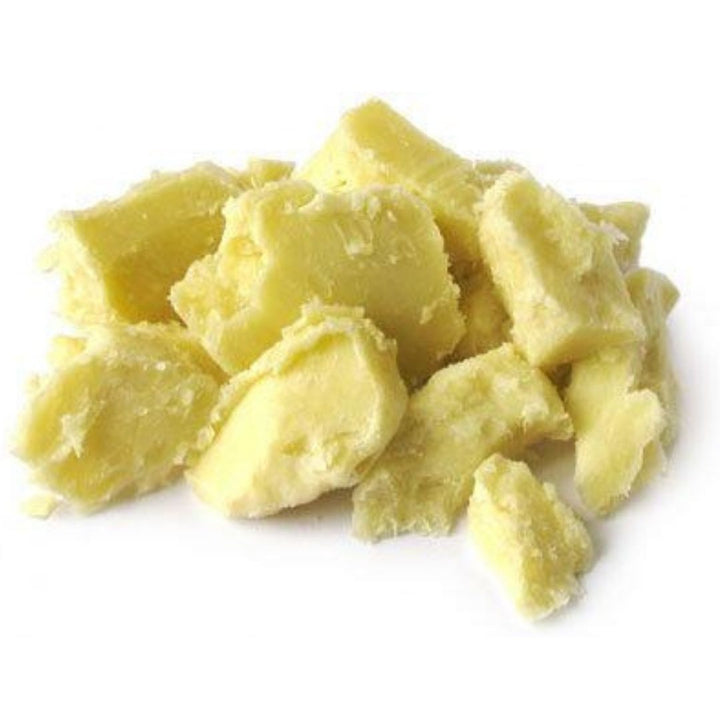Refined Shea Butter
Introduction
Refined shea butter is milky white and has a light smell, usually needs to be refined to obtain raw materials that can be used in cosmetics. Like most vegetable oils, the main component of shea butter is triglycerides, and the fatty acids mainly include saturated fatty acids such as palmitic acid, stearic acid, and arachidic acid, and unsaturated fatty acids such as oleic acid and linoleic acid. In addition, shea butter also contains a lot of unsaponifiable substances. Vegetable oil generally contains less than 1% of unsaponifiable substances, while the unsaponifiable content of shea butter is as high as 7% to 10%. Chief among these unsaponifiables are phytosterols and tocopherols (vitamin E). In addition, triterpene esters are also important components in shea butter. A large amount of unsaturated fatty acids and unsaponifiable components give shea butter an excellent skin care effect.
Unrefined shea butter is the actual fatty substance extracted from nuts in their natural and raw state. This means absolutely nothing is added. It has a soft and creamy texture, can be yellow or ivory in color, and has a slightly nutty flavor.
Main ingredient
The main component of shea butter is also triglycerides. The fatty acid part mainly includes saturated fatty acids such as palmitic acid, stearic acid and arachidic acid, and unsaturated fatty acids such as oleic acid and linoleic acid. In addition, shea butter also contains a lot of unsaponifiable matter.
Source
Shea butter is extracted from the fruit of the shea tree. Shea butter is mostly grown in the tropical rainforest between Senegal and Nigeria in Africa. It is a kind of hardwood. The adult tree is 15 to 20 meters high, and the age of the tree is often hundreds of years old. This tree can only grow on the African continent.
Efficacy and function
Shea butter is the closest to the indicators of human sebum secretion oil. Shea butter contains non-saponifiable ingredients such as phytosterols and vitamin E, which can fully moisturize the skin and resist ultraviolet rays (UVB). In addition, these ingredients also have excellent repairing and anti-inflammatory functions. Shea butter has a good skin penetration function, can promote the rehydration of skin stratum corneum cells, and at the same time can form a protective film on the skin surface to prevent skin moisture from volatilizing, thus having a strong moisturizing effect on the skin. Shea butter The oil itself is a natural emollient, and it has the effect of exfoliating and preventing skin aging. Therefore, shea butter is also a good additive for whitening cream and nutritional anti-aging cream. 2%-8% is the best.
Application field
Shea butter is mainly used in the cosmetic industry for skin and hair related products (lip gloss, body balm, emulsion, conditioner for dry and brittle hair). It is also used in soap making. Some artisanal soap makers utilize 25% shea butter—about 28% of the EU maximum, but this is rarely the case in commercially produced soaps because it costs less than palm or olive oil higher. It's a great moisturizer for people with dry skin conditions, and while it's not proven to cure, it can ease the pain and itchiness associated with tightness.
In some African countries such as Benin, shea butter is used in cooking, as a waterproof wax, in hairdressing, in candle making, and as an ingredient in medicinal ointments. It is also used by makers of traditional African percussion instruments to increase the durability of wood (such as carved shells), maracas, and leather tuning straps.
Usage
Shea butter is used in a variety of cosmetic formulations:
- Sunscreen products: the dosage is 3-25%, suitable for sunscreen products and after-sun repair products.
- Hair products: Use 1-3%, nourishing shampoos and conditioners for dry hair, post-color care products.
- Shower gel: Dosage 1-2%.
- Soap: use 10-50%.
- Skincare: Use 3-15% in anti-aging products, night creams, care products for sensitive and dry skin, winter products, hand creams, foot creams, body lotions baby products, shaving Products such as soothing lotion must be used.
- ......
Extraction process
Shea butter is extracted by hydraulic pressing multiple times and then refined, bleached and deodorized again.
Sample


